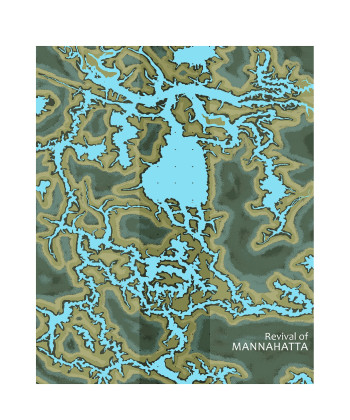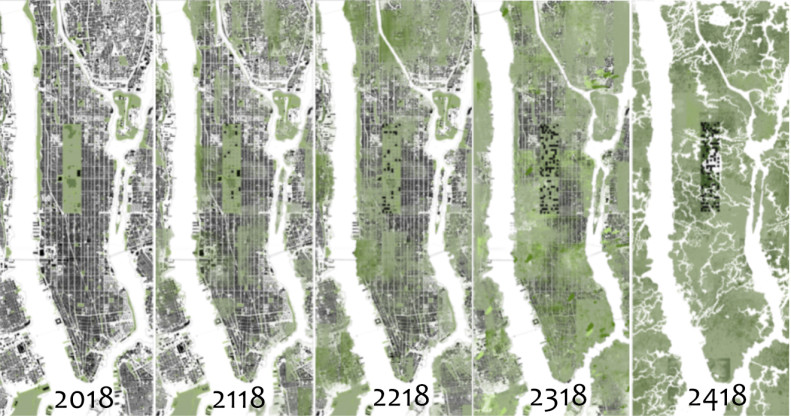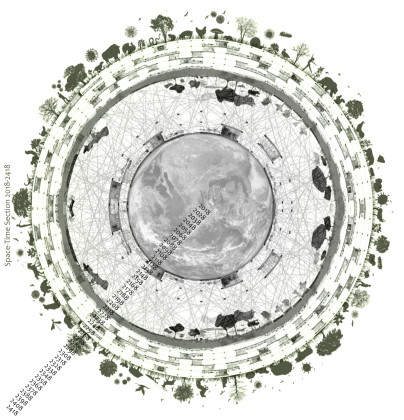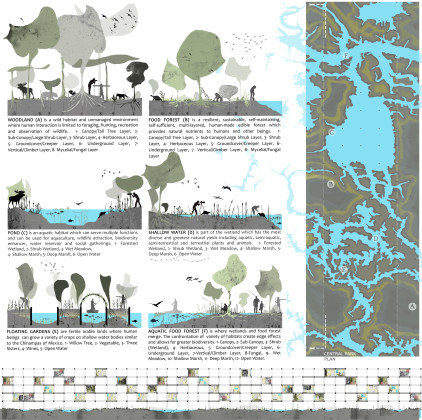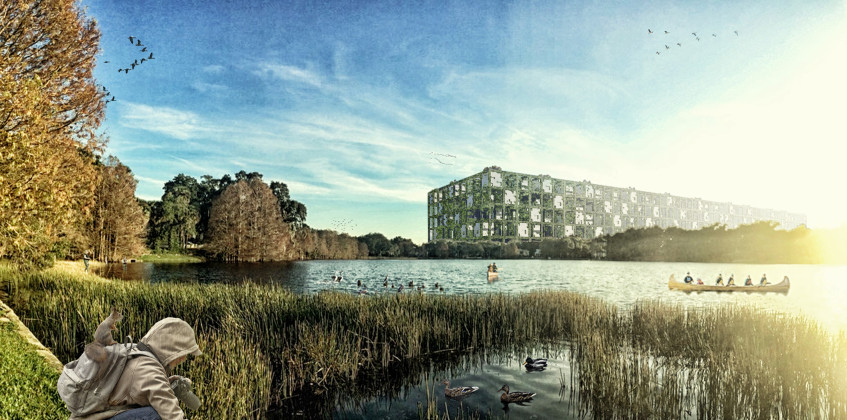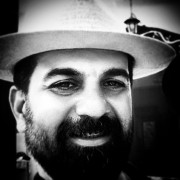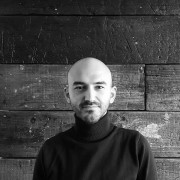From Central Park Of Manhattan To Central City Of Mannahatta
Capitalist urbanization facilitates the domination of ruling men over the Earth and ‘the other’ beings, generates the oppression of 99% by the 1%, and has devastating effects on the whole planet: deforestation, soil loss, extinction of species, environmental pollution, vulnerability of ecosystems and communities, poverty, social exclusion, displacement and deteriorating socio-ecological disasters. To save our lives and planet, it is essential to find a fair, holistic and nature-friendly model of inhabiting the Earth.
This project is a “de-urbanization” project and tries to introduce a visionary model, in which free and equitable human communities’ organization cooperates with nature to restore ecosystems and regenerates lives which have vanished during the last 400 years. While becoming Manhattan - a strongly dependent island to the tangible and intangible resources from all around the world - Mannahatta has lost her resiliency, self-sufficiency, natural ecosystems and biodiversity.
This project deals with social and ecological changes of Manhattan, from past to future. In line with transition design philosophy, we developed our design proposal which envisions the ecological restoration of Manhattan in 400 years, by taking precautions against possible transformations due to climate change and environmental catastrophes, and with inspiration from Eric W. Sanderson’s research on the natural history of Mannahatta which illustrates the condition of the island 400 years ago.
Aiming to create permanent and resilient ecosystems and human communities, we employed permaculture design ethics, principles and techniques suggested by Bill Mollison as the scientific and philosophical foundation of this transitional project. Therefore, transition of Manhattan will build up bio-regional, collaborative, communal and self-sufficient human ecosystems which support nature and wildlife.
Reforestation of the whole island is the main outcome of this design proposal. This will be realized through the replacement of all the buildings of Manhattan with restored ecosystems. During this transition which will take 400 years, human communities will be transferred to a superblock, the “central city”, over the Central Park area. This bio-city will be constructed by recycling the ruins of Manhattan. The central city above and the food forest below will meet the food, shelter, energy and other needs of inhabitants of Mannahatta from 2418 and afterwards.
ECOLOGICAL RESTORATION OF MANHATTAN
This project aims the ecological restoration of Manhattan, and the revival of the biodiversity of Mannahatta. This includes the gradual transition of the island in 400 years into a forest, during which decaying buildings of Manhattan will be demolished, their lands will be restored and their materials will be recycled and used in the construction of a resilient and permanent superblock, the “central city”, above Central Park area. The island’s ground will be a natural habitat for more than human communities and will include a variety of ecosystems such as food forests, gardens, diverse wetland systems and woodlands.
“Central city” will be an autonomous bio-region composed of 500 self-sufficient, off-grid and ecological communities. The peer to peer relations between these communities and the distribution of power will create a resilient, solidarity-based society and prevent all kinds of exploitations including the domination of men over human beings and communities, and men over other beings and nature. The interconnections between communities and natural ecosystems will restore the web of life on the ground and also inside the city structure. Similar to the Pre-Columbian Lenapes, the humans of Mannahatta will cohabitate in harmony with all the other beings on an island which can nourish, sustain and support all its inhabitants and supply all their needs.
TRANSITION TOWARDS MANNAHATTA
This project foresees the gradual transition of Manhattan Island into a wild and edible forest. This transition aims to reverse the ecological degeneration of Manhattan which took place during the last 400 years, and bring wild nature, ecosystems, and biodiversity back to the island in the following 400 years. The first step will be building a variety of edible ecosystems on Central Park area, such as food forests, edible gardens, wetlands, ponds and floating gardens. As these ecosystems grow and establish themselves, they will start to attract wildlife to Central Park. Meanwhile, the decaying buildings of Manhattan will be demolished and their materials will be used for the construction of a superblock, “central city”, above Central Park area. In the locations remaining from these buildings, the soil will be rehabilitated, ecosystems will be restored, and nature will take over by time. In 400 years, the whole island will be replaced with a forest. This forest and the “central city” will be living in symbiosis, where the forest provides all the sustenance for the inhabitants of Mannahatta.
 17.12.2018
17.12.2018



